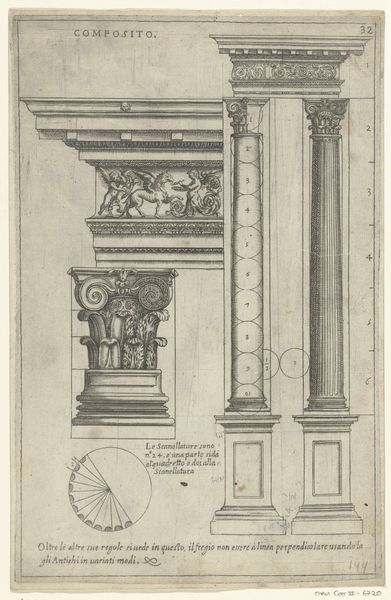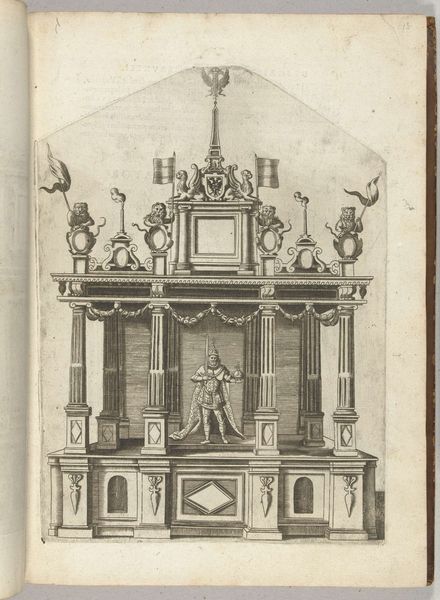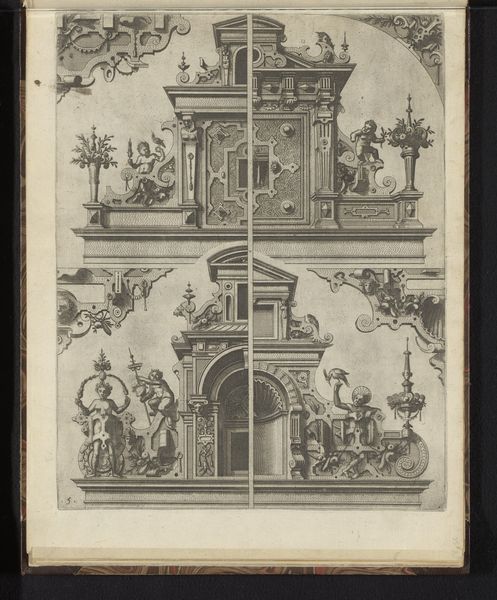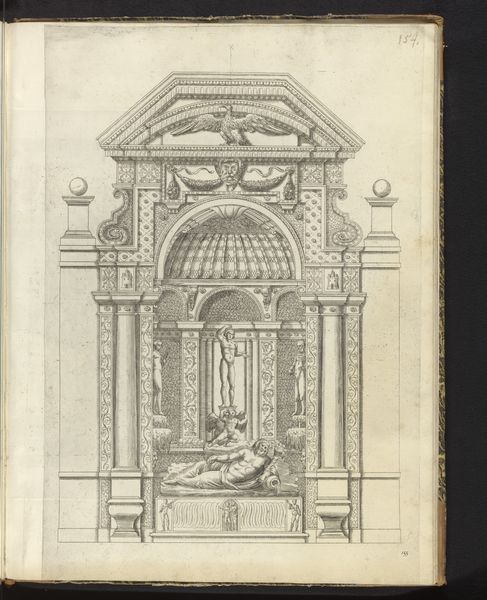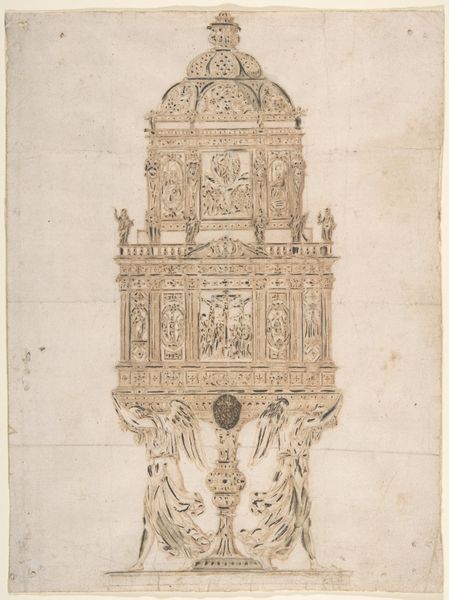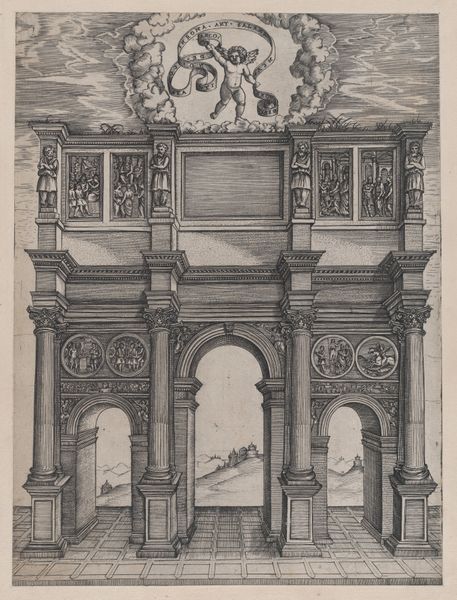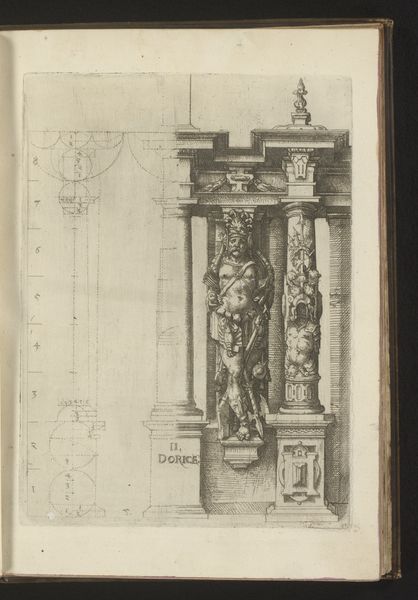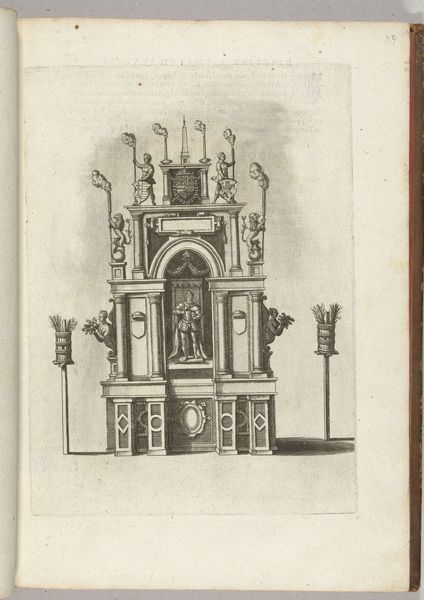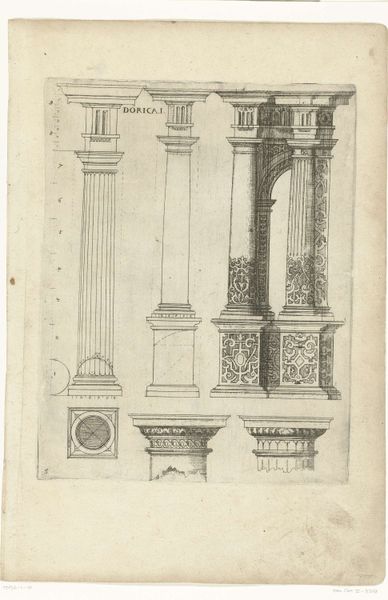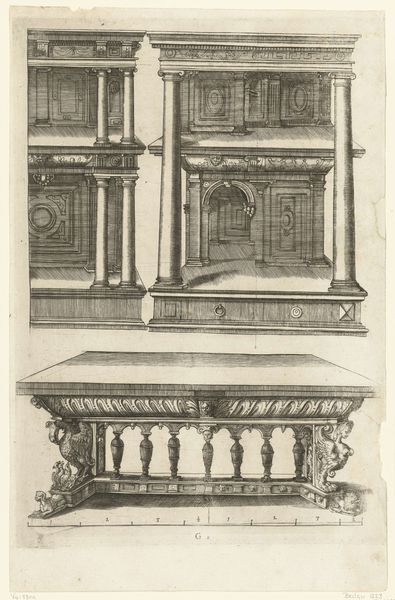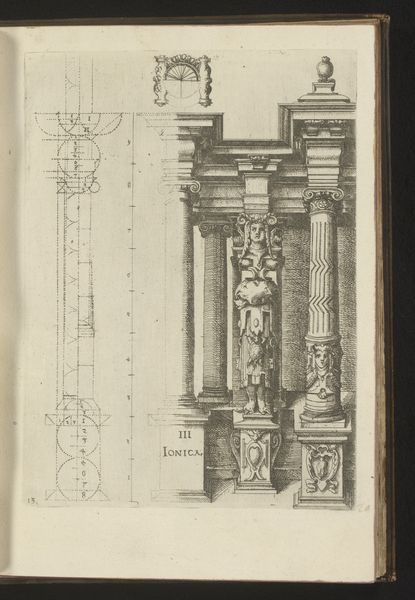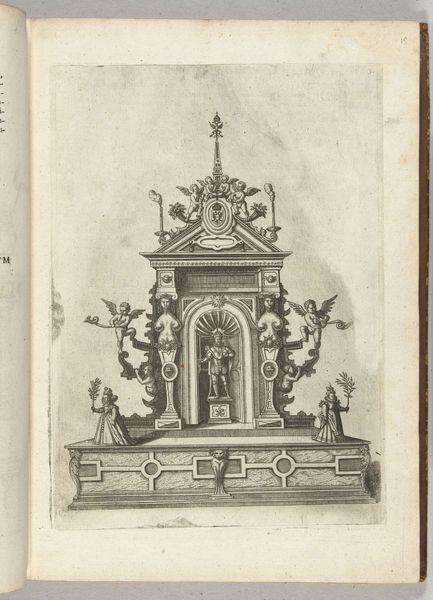
drawing, print, engraving, architecture
#
drawing
#
baroque
# print
#
history-painting
#
engraving
#
architecture
Dimensions: height 212 mm, width 145 mm
Copyright: Rijks Museum: Open Domain
Editor: Here we have Jean Lepautre’s "Twee altaarontwerpen op de Romeinse manier," or "Two Altar Designs in the Roman Style," from 1665, residing in the Rijksmuseum. It's a detailed engraving of two proposed altars. They’re so ornate, they almost feel a little... theatrical? What captures your imagination when you look at this piece? Curator: Oh, theatrical is the perfect word! Lepautre wasn't just designing altars, darling; he was composing miniature stage sets for faith. I see the Baroque's love of drama played out in these intricate details - the columns, the statues, the swirling ornaments... It's all about creating an overwhelming sense of awe and wonder. The architectural elements are so carefully rendered. Does the meticulous detail speak to you? Editor: Absolutely! The level of detail is striking, especially considering it’s an engraving. I hadn’t thought about it as theatrical until you pointed it out, but now I totally see it. Curator: Consider how the light might have played across the surfaces of these real-life altars. Lepautre's use of shadow suggests a dynamic interplay of light and dark, almost a spiritual spotlight. The baroque loved movement! One could say he wasn't just showing us designs but trying to evoke a feeling. Did engravings like this one influence interior designers at the time? Editor: I hadn't considered that they might influence design beyond just altars. It feels like it would have been cutting-edge interior design back then. It is almost like a blueprint! I’ll need to remember Lepautre for inspiration! Curator: Absolutely! Blueprints of spiritual theatre, for everyone. The way faith and artistry came together then –it was a moment!
Comments
No comments
Be the first to comment and join the conversation on the ultimate creative platform.

